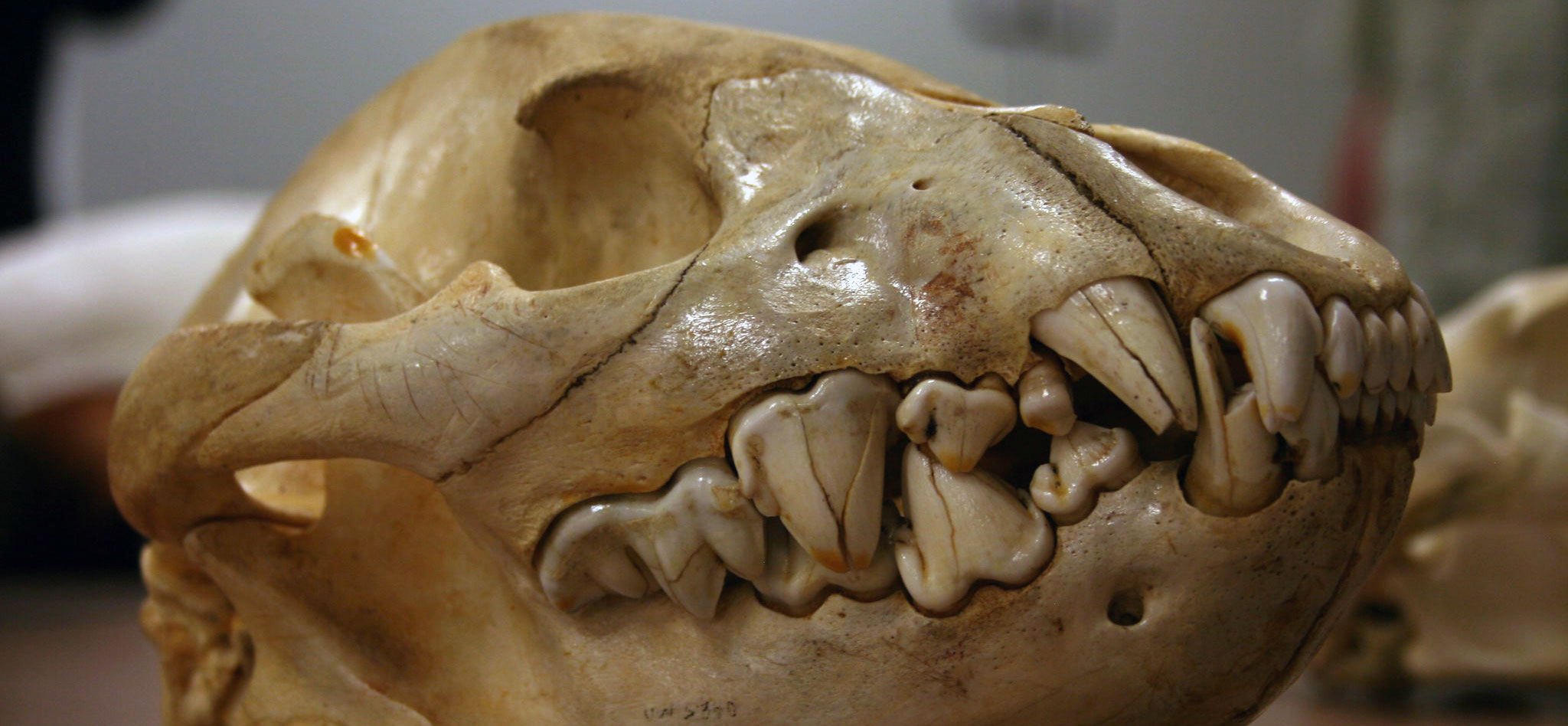Public Collections and Displays: The Berry Center
The Berry Biodiversity Conservation Center

The Berry Biodiversity Conservation Center (Berry Center), made possible by a generous gift from Robert and Carol Berry, is a 40,000 square foot building housing multiple facilities, students, faculty members and programs all centered around the study of biodiversity. The Berry Center is a space to examine and explain biological diversity and the importance of diversity for the maintenance of ecological structure and processes.
The Museum of Vertebrates, and the Biodiversity Institute are housed with in the Berry Center. Administrative offices are in BC 231.
The Center also contains a variety of displays and depictions of biodiversity in Wyoming and beyond. These include mammal, lichen, prokaryote, and fungi displays and dozens of photographs of living creatures in the state.
Visitors are welcome in the Berry Center at any time, and tours can be arranged for large groups.
Click here to download the floor plan of the Berry Center so you can find what you're looking for!
On Display:
The Center contains a variety of displays and depictions of biodiversity in Wyoming and beyond. These include mammal, lichen, prokaryote, and fungi displays and dozens of photographs of living creatures in the state.
Curated Displays
The Center also hosts Special curated displays from the Museum of Vertebrates, and Rocky Mountain Herbarium
The Aven Nelson Display-Celebrating 100 Years!
Curated By Addison Perryman, 2022-23
This display highlights the work of Aven Nelson and his contribution to University of Wyoming, the Rocky Mountain Herbarium, and the field of botany. The Aven Nelson building celebrates its 100th year on campus and this display was intended to accompany that milestone!
The ideas of this display were brought to life in collaboration with the Rocky Mountain Herbarium and Biodiversity Institute. The goal of this display was to capture an array of who Aven Nelson and what he did. This display features scans of three type specimens collected by Aven Nelson, the vasculum and a field journal from his Yellowstone expeditions, and photos from his time at the University of Wyoming.
By filling this display with the chosen artifacts people gain insight into the work of an early botanist. The text elements of this display are meant to inform viewers while also intriguing them to explore plants further, maybe by visiting the Rocky Mountain Herbarium on campus! The QR codes were added to this display to provide digital access to the Herbariums website and give viewers more information. The Herbarium is a great place for college students, school groups, or curious individuals to learn about western plants. Viewing the great inventory of dried plant specimens is an opportunity to see the great diversity and beauty of vegetation from this region!
A note from the display creator:
“It has been such an immersive learning experience to put this display together. I have learned a great deal about plants, Aven Nelson, and botany through this process. It is my hope that this display peaks the interest and curiosity of others in a way that pushes them to pursue further opportunities for learning. I am so grateful to all who helped me with the creation of this display!”
Special acknowledgments to the following contributors and supporters:
Dorothy Tuthill-Advisor
Ernie Nelson and the Rocky Mountain Herbarium team
The American Heritage Center
Inna Willis-Graphic Designer
Bryce Tugwell-Website Design
Aspen Brown
The Copy and Print Center

